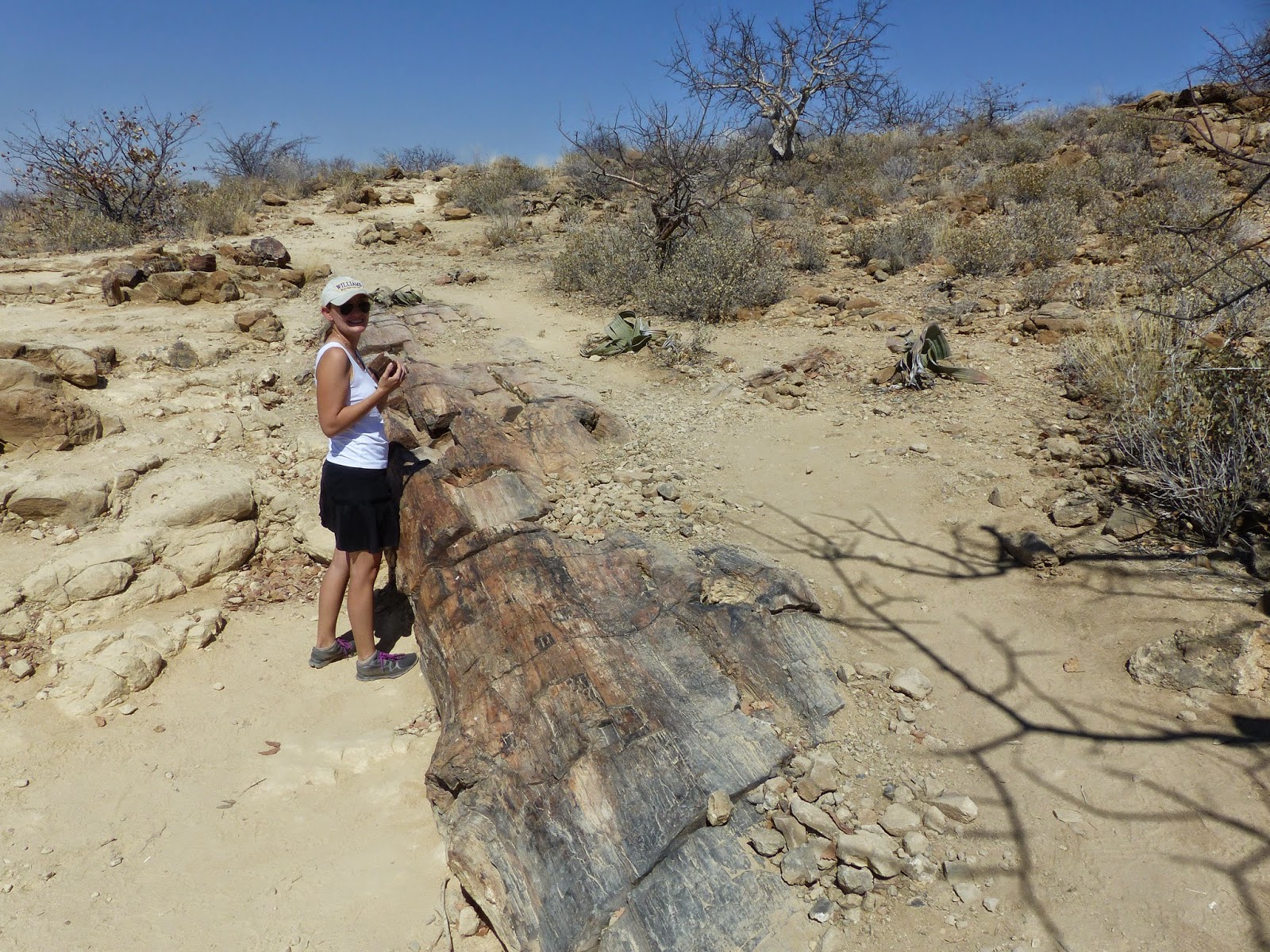We’ve driven approximately
1,000 km from the dunes of Sossusvlei.
We have crossed the Tropic of Capricorn and passed through a multitude
of empty, otherworldly landscapes, although there have been a few “towns” on
the way as well.
We spent Sunday night near
Twyfelfontein, a UNESCO world heritage site renowned for its engravings etched
by the San people thousands of years ago.
The San, also commonly known as Bushmen, used to be nomadic and wandered
throughout the deserts of Southern Africa.
Their artwork, including the engravings we saw and paintings visible
elsewhere, typically depicts the animals they hunted.
To avoid the heat (on
Sunday afternoon, it had almost reached 40°C), we arrived at Twyfelfontein as
soon as it opened Monday morning. A
guide chaperoned us through the engravings on a private tour as the early
morning light began to shine the sandstone.
The works also depict less common specimens that the San occasionally stumbled across during their wanderings. For example, a few engravings show seals and
penguins, both seen by the San on salt-gathering expeditions to the coast. Other pieces of sandstone are carved to show
animal tracks, teaching young hunters how to find their chosen prey. Perhaps the most interesting were “maps” of
waterholes, inscribed in the stone to show other hunters both permanent and
seasonal water sources with two different symbols.
Nearby, we stopped to see
various items of geologic interest.
First were the “organ pipes,” which are basalt driven out of the ground
at odd angles by ancient lava flows.
Now, people say they look like organ pipes, although Steph thinks they
more closely resemble cubist paintings.
The Twyfelfontein area is
also home to an extensive petrified forest.
We backtracked slightly to see the 260 million year old tree trunks
emerging from the desert sands. Giorgio
was not quite sure what precisely constituted a petrified forest prior to our
arrival, but was fascinated by the way that pressure had transformed the carbon
in the massive tree trunks into stone.
Once again, we had a private tour from a local guide and he was
somewhat disappointed that we hadn’t seen the similar forest in Arizona. We will have to make a stop in February!
Sadly, although one of our
guidebooks indicated that there was a not-to-be-missed attraction called the
“wondergat,” we never found the turn off to this place of wonder, apparently a
massive sinkhole in the desert.
After our educational sightseeing, we continued north, deeper into Damaraland. We had read that even though this area isn’t a national park, there are more wild animals roaming. Seeing signs for elephant crossing, we were on the look out for the area’s special desert-adapted elephants, but to no avail. However, a group of giraffes was eager to make our acquaintance!
#stephandgio









No comments:
Post a Comment